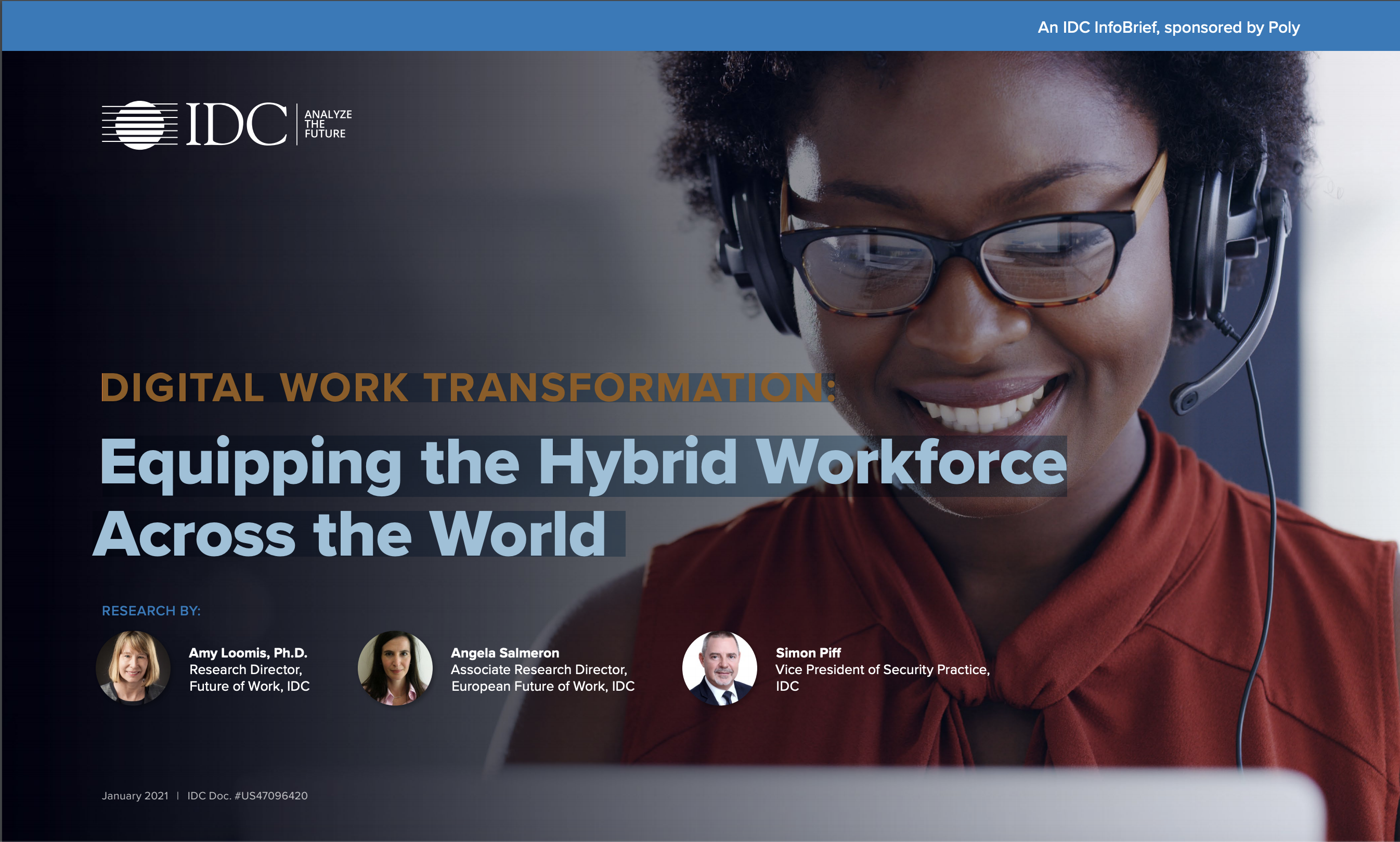IDC Report Finds Many Offices Plan to Stay Remote/Hybrid for Foreseeable Future

In the weird/unpredictable/unprecedented (did I get all the cliches in there?) times we are in, a question has stayed at the forefront of all of our minds: What the heck are our jobs going to make us do when COVID-19 is no longer a thing? For the past (almost) year, we’ve said “new normal” this and “new normal” that. But who can actually predict what any future norm will look like?
Enter IDC with a few research analysts Poly invited to find which technologies and workplace trends have redefined ways of working in the COVID-era and beyond — in three key geographical areas:
- North America
- Europe
- Asia/Pacific
First of all, let’s note that IDC found that 47% of organizations that had a long-term digital transformation strategy and made investments before the pandemic are showing strong signs of business growth. But I didn’t have to remind you that a well-prepared workforce is going to find a way to make it through a pandemic. That’s common sense. Also, 84% of business leaders plan on accelerating the digitalization of work processes through the use of videoconferencing and other tools. That part makes sense because 83% of business leaders are now planning more opportunities for remote work than they were pre-pandemic.
North America — The Remote Work Recovery Model
- 38% of North American companies are prioritizing workplace transformation investments to survive and thrive in the “Next Normal.”
- Remote work is normalized for knowledge workers, while guidelines for essential workers become clear (businesses and schools are still experimenting with limited-opening models).
- Basically, post-COVID will see a good amount of people go back to the office, but not as many as were there in, say, 2018.
Europe — The Hybrid-by-Design Recovery Model
- 40% of European companies are prioritizing workplace transformation investments to survive and thrive in the Next Normal.
- Work locations are becoming more decentralized, leveraging a network of coworking spaces closer to commuter hubs.
- One in four European companies plan to primarily work from home post-vaccine. Governments across the region are introducing legislation to allow hybrid working models (although remote working legislation varies by country).
Asia/Pacific —The Office-First Recovery Model
- 39% of APAC organizations are investing in “crisis response” technology that either reduces operating costs or focuses on business continuity in reaction to the current pandemic.
- 74% of Asia/Pacific organizations anticipate a full return to the primary workplace in a post-vaccine world, likely by the second half of 2021. (Early remediation against the COVID-19 pandemic and strict regulation have enabled many Asia/Pacific countries to return to the office as a primary work location.)
- However, there is an idea that businesses need to be digital-first in order to connect with customers/partners if and when a crisis occurs.
Conclusion
As you can see from the data above — the workforce is going to be forever changed. I leave you with two other key stats: 39% of organizations reported that they will support the new demands of a flexible/remote work style by increasing endpoint investments. Finally, 40% said they will redesign their work models to support a hybrid workforce including physical workspace, tools and endpoints.
The full IDC InfoBrief: “Digital Work Transformation: Equipping the Hybrid Workforce Across the World” can be found here. You can also check out Poly’s blog post and catch the other highlights.




